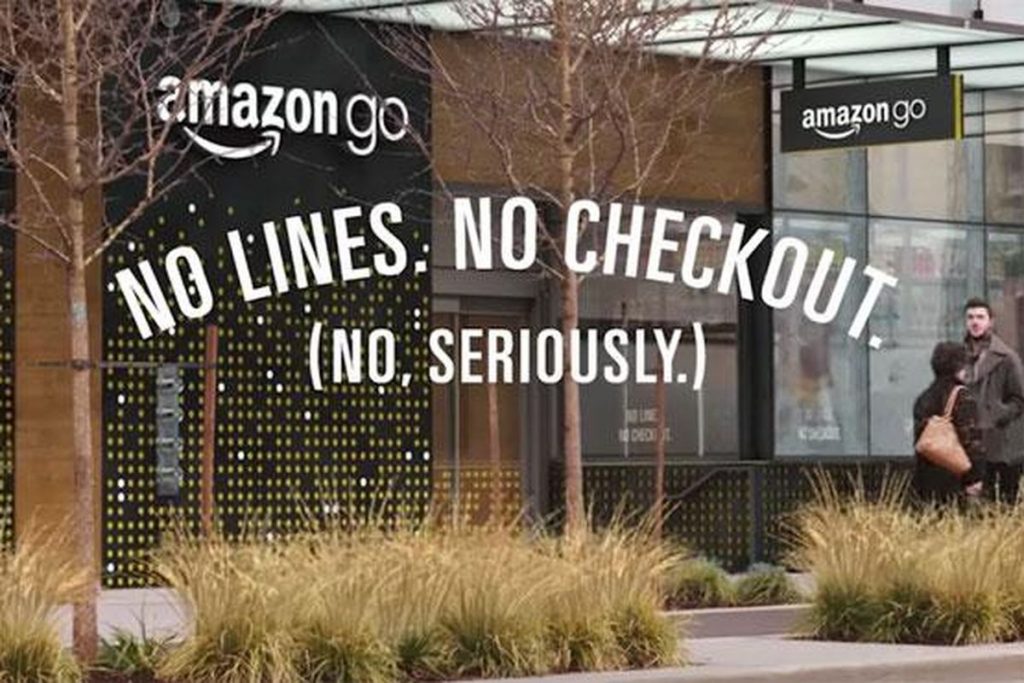Amazon’s new checkout-free grocery concept, Amazon Go, launched early this year in Seattle. The 1800 square-foot test store offers freshly prepared foods, take-home meal kits, snacks, and popular grocery items. Experts first wrote about Amazon’s foray into the grocery space late last year when information was primarily speculative. Now that Amazon’s official prototype store is open for business, a closer look at the business model reveals insights that grocery retailers can learn from and leverage.
A CLOSER LOOK AT AMAZON GO
No Cashiers, No Waiting
Amazon Go’s “Just Walk Out” experience eliminates the checkout lines that are chief among shopper complaints. Powered by technologies like those in Amazon’s self-driving cars, Just Walk Out could transform grocery shopping in several ways:
- Free App. Shoppers enter the store through a turnstile of sorts and scan a smart phone app to begin the quick and easy shopping process.
- Sensor Technologies. Together with the app, sensor-enabled “smart” shelves track every item the shopper picks up and returns to shelves.
- Virtual Carts. The app invisibly tallies selections in a virtual shopping cart linked to an online Amazon account.
- No Checkout. Upon exiting the store, the customer automatically pays with the credit or debit card linked to the account, and receives an emailed receipt.
- Prime Locations. Planned for urban locations initially, these stores could grow to offer the convenience of a 7-11 store combined with the product breadth of a Walmart or other full-sized grocers.
What’s a Traditional Grocer to Do?
The flagship store in Seattle is a working prototype, or model, of how Amazon currently envisions the stores. For now, Amazon employees serve as beta customers helping the company work out kinks before going live to the public and branching out to other markets. However, according to Business Insider, Amazon plans to open 2,000 stores over the next decade, which means traditional retail grocers should prepare now and act with the following in mind.
- Changing Pressures. Market disruptions challenge all competitors in the space to think differently. In response to the grocery market changes underway, retailers will be looking for ways to leverage technologies, add automation, and use more data to improve the customer experience and lower operational costs.
- Watchful Waiting. As with any new-to-the-market approach, problems will take time to surface. Theft, costs, technology, hacking, and other issues pose a realistic threat to success. For that reason, it may be wise to wait until the initial response to Amazon Go is clear before making drastic changes to your retail grocery model.
- Starting Small. Taking smaller steps now can help you stay competitive as the market adjusts. Offering a more meaningful omni-channel experience with smart phone apps, in-store Wi-Fi and kiosks, and personalized customer service is a good place to start. Another way to reach customers is to maximize existing strengths, such as highlighting and promoting the products and services that make your brand stand out.
- Differentiating through Customer Experience. Amazon isn’t the only company that’s re-thinking the traditional grocery shopping experience. For example, Wegman’s differentiates itself by offering customer amenities like a food bar, ample sampling opportunities, and top-notch customer service. In doing so, the New York-based supermarket has gained an almost fanatical customer base. Other large grocery chains have begun incorporating coffee bars, live music events, wine-tastings, etc., turning traditional grocery shopping into a social experience.
Planning is Key
Amazon, as its name conveys, has a massive presence in the online retail space. And because Amazon Go is inextricably linked to its mothership’s powerful brand, supply chain, and technologies, some retail grocers may find themselves fighting an uphill battle to survive. But it’s just as possible that traditional grocers will always hold a place in customer’s hearts and wallets. With careful planning and timely execution, retail grocers can create their own ways to compete with Amazon Go and manage future disruptions of all kinds.

